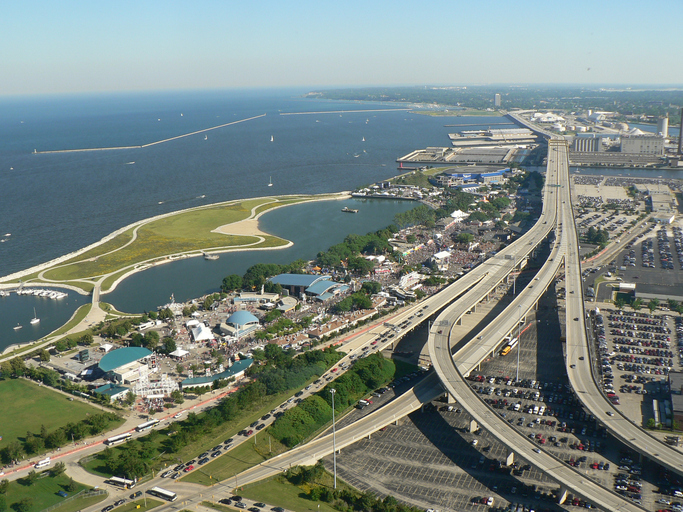Moving to Milwaukee, WI
Plan Your Move to Milwaukee With SpareFoot
Planning a move to Milwaukee? SpareFoot can help. Use SpareFoot to find special deals and discounts on Milwaukee Moving Truck Rentals. If you need a storage unit as part of your move, SpareFoot makes it easy to find storage units in Milwaukee too.
Thinking about moving to Milwaukee?
You’ve made a great choice. Milwaukee attracts new residents with its big city amenities in a mid-sized package. The Brew City is friendly, affordable, and the Mecca of Beer. What more do you need to know?
Where Are All the New Residents of Milwaukee Moving From?
If you associate Milwaukee with beer, you certainly aren’t alone, but what about golf? Or motorcycles? It’s true: Milwaukee-area golf courses have hosted PGA and LPGA events, and Harley-Davidson has its headquarters—and a museum—in the city. Perhaps that’s what’s attracting new residents to the area. Although the metro area and the city proper have seen […]
Living in Milwaukee
Milwaukee is home to 595,047 Milwaukeeans. With an area of 96.1 square miles, Milwaukee has a population density of 6,192 persons per square mile, which makes it more dense than many other cities of comparable size.
The Milwaukee-Waukesha-West Allis, WI Metropolitan Statistical Area boasts a population of 1,572,482 people, of which Milwaukee proper’s population makes up 38%.
Housing Market in Milwaukee
Affordable housing is one of best things Milwaukee has going for it. The median home value in Milwaukee is $107,700, -46% below the US median value, according to Zillow. The median price per square foot in Milwaukee is $90. Over the past 5 years, home values in Milwaukee have increased by 5%.
Renters in Milwaukee will also have an easy time finding affordable housing. The median rent in Milwaukee is $1,005 per month, which is 30% lower than the US median. Over the past year, rental rates in Milwaukee have decreased by 0.3%.
Milwaukee Economy
Milwaukee’s economy is growing strong. The Milwaukee metro area’s GDP grew by 18% between 2010 and 2015, from $87 billion in 2010 to $102 billion in 2015, a total increase of $15 billion. The metro area has a per capita GDP of $64,999. According to the US Census Bureau, the median household income in Milwaukee, WI is $54,336, 21% higher than the national median. Milwaukee’s unemployment rate is 3.9%.
Find A Self-Storage Facility Near You
Weather in Milwaukee
If you’re allergic to cold weather, Milwaukee might not be for you. Milwaukee winters are cold, with an average temperature of 28 degrees. Summers in Milwaukee are cool, with an average temperature of 69 degrees. The average temperature in Spring is 56 degrees and the average temperature in Fall is 39 degrees.
If you’re moving to Milwaukee, you better bring your umbrella! Milwaukee sees an average 127 rainy days per year, and had an average annual rainfall of 34.8 inches. Milwaukee is relatively humid, with an average annual relative humidity of 72. And don’t sweat it if you forget to pack your sunglasses. Milwaukee only gets an average of 2,484 sunny hours per year and 90 sunny days, fewer than much of the rest of the country.
Crime Rate in Milwaukee
Milwaukee does have some problems with violent crime, with a violent crime rate of 1,596 incidents per 100,000 persons according to the FBI, a higher rate than average. Property crime rates in Milwaukee are relatively high, with a rate of 4,264 incidents per 100,000 persons, a higher rate than average.
Milwaukee Traffic
Ask anyone who lives in Milwaukee what the city’s biggest problems are and traffic will almost certainly be one of them. According to a survey conducted by INRIX, the average commuter in Milwaukee spends 22.7 hours in traffic each year, with about 6% of their time commuting in a traffic jam, a higher portion than average among US cities.
Milwaukee Cost of Living
Milwaukee is a relatively affordable place to live with a low cost of living. According to the Bureau of Economic Analysis‘s Regional Price Parity survey, which takes into account cost of living metrics including the price of goods and services and housing, Milwaukee has a regional price parity of 104.3, -4.7% below the average for US metro areas.
Education in Milwaukee
Milwaukee is a well-educated city, with 20% of the population possessing a Bachelor’s degree or higher. Only 11% of the population does not have a High School diploma, while 10% of the population has a Graduate or Professional degree.
Milwaukee Demographics
The median age in Milwaukee is 37.1 years. 48.6% of the population in the Milwaukee metro area is male, while 51.4% is female. 6.9% of the metro population is foreign born.
